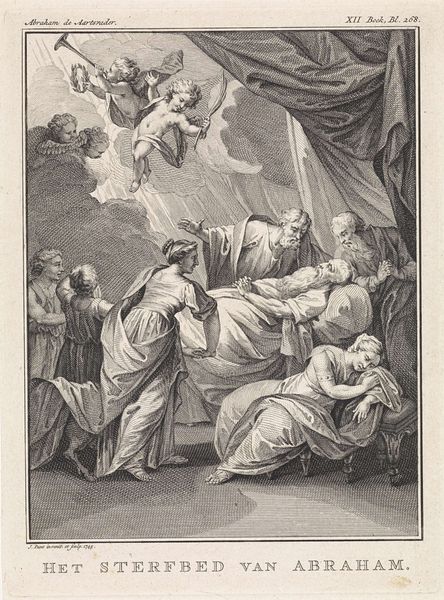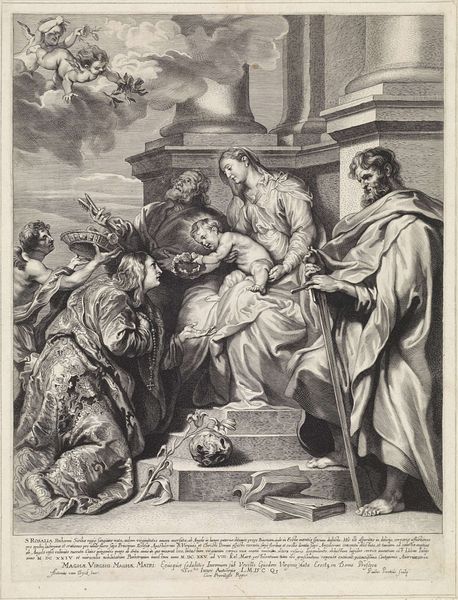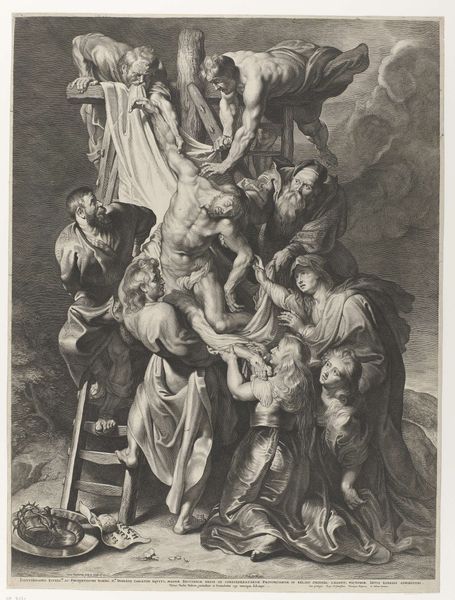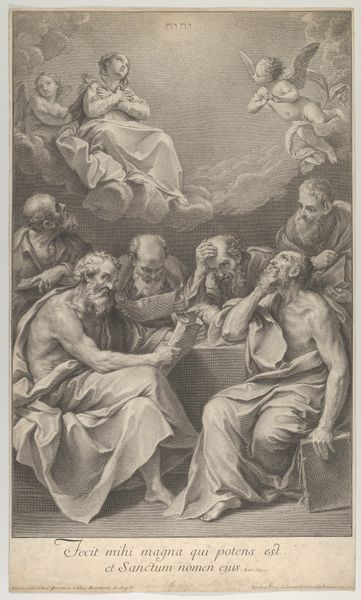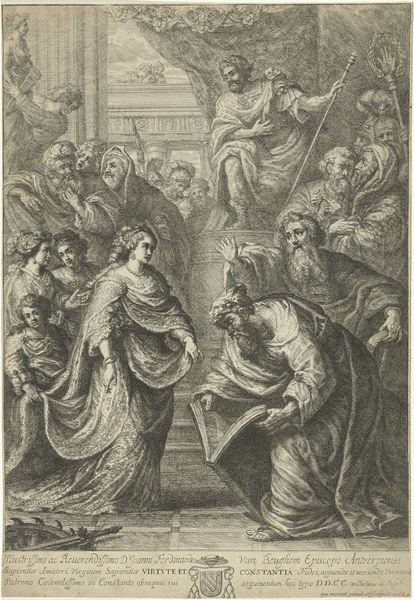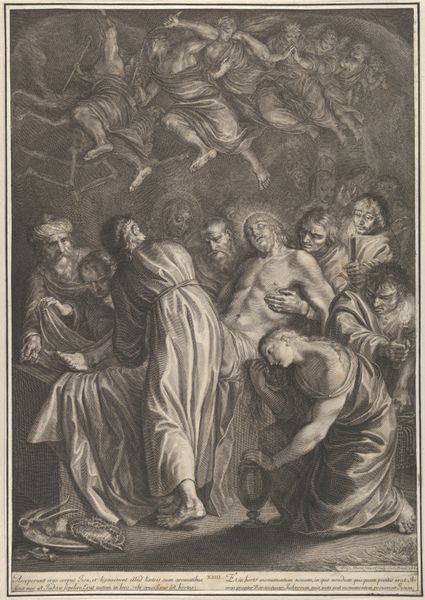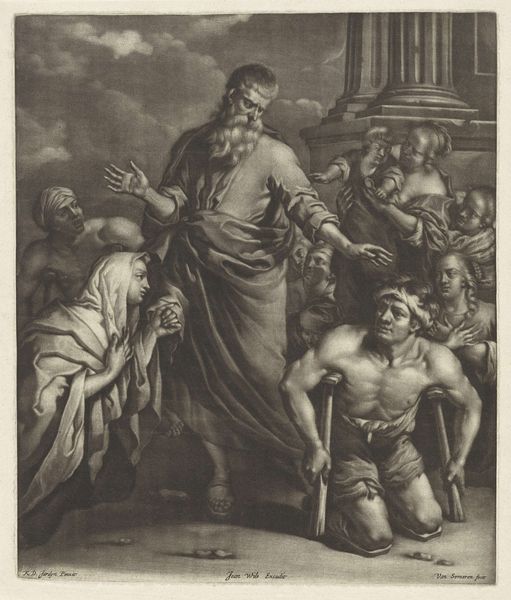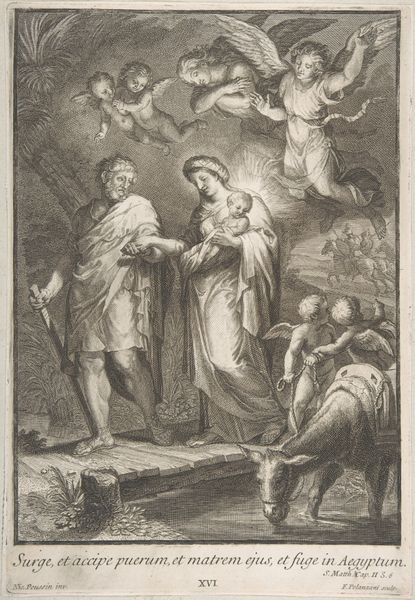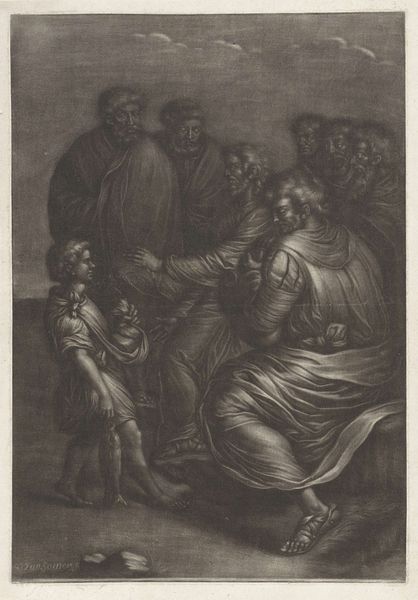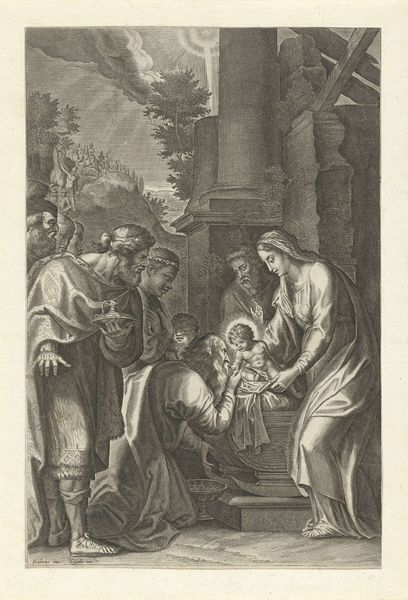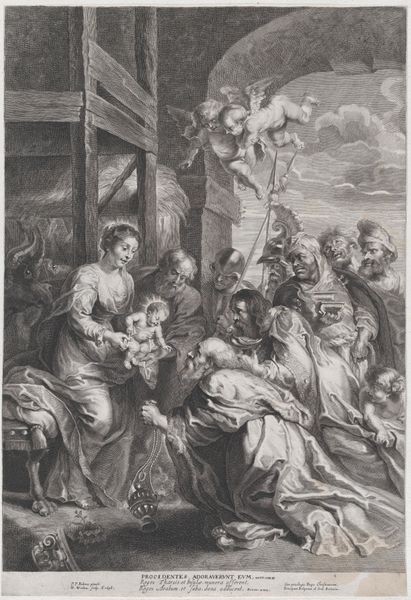
engraving
#
baroque
#
figuration
#
history-painting
#
engraving
Dimensions: height 256 mm, width 175 mm
Copyright: Rijks Museum: Open Domain
Curator: This engraving, titled "Adoration des Mages," also known as the "Adoration of the Kings," is attributed to Jacob Gole and dates from around 1670 to 1724. It is currently held at the Rijksmuseum. Editor: It’s predominantly grayscale. There’s something quite somber about its tonality, a heavy darkness from which figures slowly emerge as if they are under the glow of some spiritual light. Curator: Jacob Gole was a master of engraving, and here we see his technique used to reproduce an image – and it reflects the socioeconomic conditions in which art had to be accessible to reach wider audiences beyond the elite. How might his work fit into networks of patronage? This particular subject, depicting the arrival of the Magi bearing gifts, would have been incredibly popular at the time. Editor: I find myself focusing on the use of chiaroscuro. The contrast is quite dramatic; notice how Gole uses subtle tonal variations to shape form. It draws my eye toward the Christ Child, naturally, who's at the center, swaddled in white fabric and surrounded by deeper shadow tones that contrast strongly against a single light source near the top of the composition, illuminating Mary. Curator: And look closely at the lines defining those robes! We see the density and texture Gole achieved. Think about the socio-economic aspect – this piece likely facilitated the mass distribution of religious narratives, making religious imagery more accessible beyond church walls. Editor: The figures, rendered in this Baroque style, possess this intense sense of emotion and drama. Look how each of the magi is drawn with incredible care and then consider the semiotic elements like the placement of figures, objects such as the vessels they hold and bring forth to highlight themes around reverence. Curator: Indeed. Consider this from a Materialist point-of-view. It tells a potent narrative of religious iconography while illuminating 17th and 18th-century modes of production through mass production of art through the process of engraving and the skilled labor. The image itself acted almost like a devotional object, bringing those religious ideals straight into homes. Editor: It becomes more compelling when you understand how he manipulated line and form and tonality to produce the desired meaning: to draw one to an event that seems sacred. It's all rather complex, and that visual language has enduring significance, even centuries later. Curator: Absolutely, and these visual choices must align with his audiences' values; by deciphering this printmaking method, one is better positioned to decipher culture, which has a lot to teach us.
Comments
No comments
Be the first to comment and join the conversation on the ultimate creative platform.
